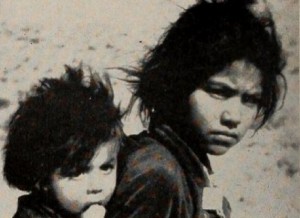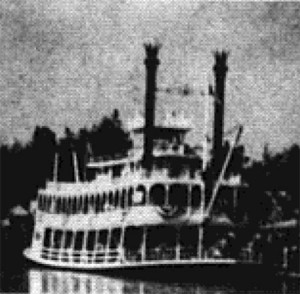
"Dr. Numa P. Dunne has accomplished in Colorful Yosemite what hundreds of other amateur movie makers have failed to accomplish — the production of a simple, well planned and charming scenic of Yosemite National Park. Here was a subject selected by scores of itinerant cameramen before him, yet "muffed" almost invariably through lack of care. Dr. Dunne found no scenic advantages in the great park not offered to others, but he obviously brought to the setting something more than the usual confused and slightly awestruck interest. Tripod steady camera work, well rounded sequences, pleasing compositions and imaginative title wordings all contribute to make up a satisfying whole." Movie Makers, 1938, 618.

"About 1800 John Colter discovered the area now known as Yellowstone National Park, set apart by the United States government in 1872 for the enjoyment of the people. It has an area of 3,458 square miles, approximately 62x55 miles. Colter's Hell, as it was then known, is a national vacation land of thermal activity, wild life, and tourists. In forty-three minutes, the Lawlers take us to all of the important thermal and water activities and a tour thru some of the remote areas where the wild life may be found, including the grizzly. This film has many, many more vistas animals, and birds than the usual visitor would see. If one cannot visit the Park he should at least see the film" PSA Journal, Oct. 1962, 33.
"Carl Weagant's sea epic, The Cruise Of The Carlsark, 3000 ft., 16mm., is a complete film record of the voyage of the ketch, Carlsark, across the Atlantic. Three Cornell men began the adventurous trip at Ithaca, N. Y., sailing through the Erie Canal system into the St. Lawrence and thence out into the Atlantic. Crossing the ocean in the little yawl, they cruised through the Mediterranean and returned home, stopping at the Canaries. The film record of the trip, made by Mr. Weagant, who was skipper as well as cameraman, is almost as important an advent in the annals of amateur movie making as the trip itself is in yachting circles. Excellent in exposure throughout, the picture contains few of the errors that would have been excusable. The continuity follows the chart of the voyage but the reels of sea scenes in the midst of the film can be considered as a separate subject. These scenes, telling the every day life aboard the ketch and the exciting incidents on the trip, are as interesting and as well photographed as any amateur made sea pictures that have come to the attention of League headquarters." Movie Makers, Dec. 1930, 759.

"A Day at the Zoo is a lively and pleasing film of a family's visit to the New York Zoological Gardens. The youngsters of the family discover the Children's Zoo and make the acquaintance of farmyard animals. They feed the chickens and pet the lambs while Father and Mother look on. The larger and stranger beasts in the main part of the Zoological Gardens are next pictured; the children feed them, too, but at a safer distance. In this film, Walter Bergmann has produced the best type of informal zoo picture — a story with human interest, enlivened with a sense of humor." Movie Makers, Dec. 1943, 477.

"Death Valley by Ernest R. Schneider, a PSA member of La Mesa, Calif. Ernie presents a fine film of this desert area with its many sightseeing and geological wonders. This 14-minute 16mm film was awarded an Honorable Mention" PSA Journal, Nov. 1971, 42.

Kodachrome travelogue of Death Valley, California.

"Denali, the high one, takes us into the Park at the base of Mt. McKinley in Alaska to give us a better acquaintance with the animals that live in the 49th state with the long, cold winters. We visit with the bears, the big ones, the moose, fox, sheep, birds, and the busy beaver. We learn that the beavers work during the short summer season cutting, gathering, and storing leafy branches for winter food. There are many close-up views of the animals feeding and doing things wild animals do" PSA Journal, Oct. 1962, 33.

"Whatever that intangible thing called atmosphere may be, Harold E. Remier has created it — out of airy nothings, to judge by what he says — in his astounding photoplay, Diary. Here, in all its hues, in all its beauty, in all its tradition of courtesy and profound courage is the America of the late Nineteenth Century, told through the medium of a woman's devotion. A Southern mansion is the first setting, then the frontier. Fortunes rise and fall as the war flames. Costumes and settings of the 1890's are recreated with fidelity. Wagons collapse in the wilderness; stone houses are built; a silver mine is uncovered. And the cost, for this epic achievement, exclusive of the 8mm. film, was the staggering sum of ten dollars! Diary is particularly noteworthy for naturalness of its lighting. However he managed it, Mr. Remier. with two large flood bulbs, somehow succeeded in making each scene appear to be illuminated by the hand lamps and chandeliers visible within it. The moonlight elopement is glamorously effective; and even candlelight is simulated with success. So, in all, the picture is a distinguished achievement — a portrayal, not only of a past century, but of a part of our American heritage." Movie Makers, Dec. 1940, 577.

"In Dineh, Henry E. Hird. whose broad sympathies have brought his talents to bear upon so many unselfish projects, has taken up an effective cudgel in behalf of the Navajo Indians in the United States. Dineh, "The People," is the Navajo word for their tribe. Mr. Hird went to the Navajo country with the simple purpose of making a record film of that proud and self reliant Indian people. From what he saw there and from his conversations with many Indian citizens, he became convinced that now, if ever, the Navajos need understanding and practical aid. His film, therefore, not only accomplishes his primary aim — of recording an interesting racial group — but, in scenes and particularly in narrative, it pleads the economic and social case of the Navajos. Mr. Hird's cinematography is of very high order, as is usual in his films. His continuity is intelligent and interesting, and his narrative is a fine plea for a worthy segment of the citizenship of the United States." Movie Makers, Dec. 1947, 514.

"A trip through the famed land of fantasy in Southern California, done for the enjoyment of old and young alike. We tour the Mississippi on the showboat, glide through the jungles with their wild inhabitants, penetrate the ocean depths on board an "atomic" submarine, and enjoy all the fascinating experiences in this land of make-believe. Unusual camera angles and freshness of approach in sound and picture give new meaning to this oft photographed subject" PSA Journal, Oct. 1963, 40.
Total Pages: 23